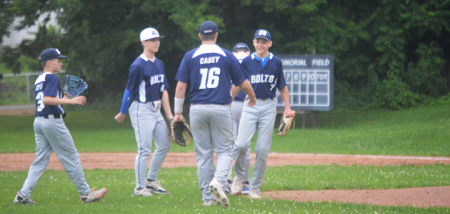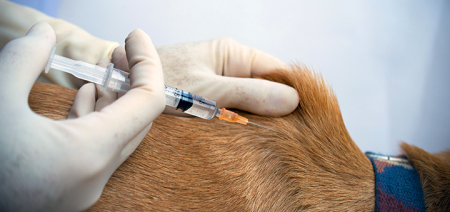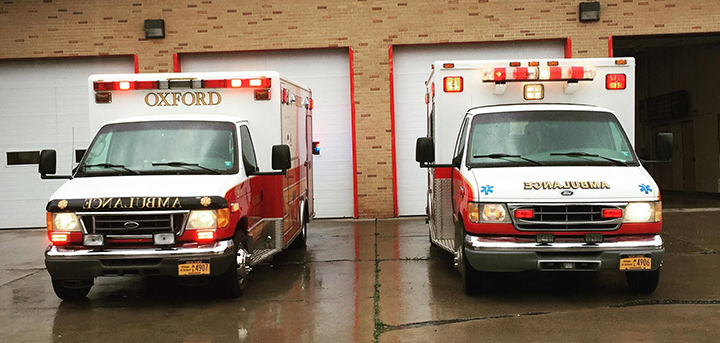Tips, Tricks And Regulations For Water Trapping As 2017 Season Begins
Published:
October 26th, 2017
By:
Meagan Schulz
The land trapping season began yesterday (the 25th) and there is a delay before trappers can start setting traps in water unless its in the Northern Zone. For most of the area that gets this publication, water trapping season begins November 25th. Any one trapping in DEC Region 4 can start water trapping November 10th.
The common animals that are targeted by trappers in the water include muskrats, mink, and beavers. River otters can be trapped in the Northern Zone and in the Hudson River Valley areas. Trappers that are interested in catching raccoons tend to set traps in the water once water trapping begins, as it is not legal to set traps in water unless muskrat, mink, otter, or beaver seasons are open.
There are a few more regulations that trappers must abide by during water trapping season. Trappers cannot set a trap within 5 feet of a muskrat house and they may not disturb a muskrat hut or den. They also cannot set certain sized traps on or within 15 feet of a beaver dam, den, or house. Check the NYS Hunting and Trapping Guide (pages 54-58) for all of the information on trapping in New York.
A lot of trappers cut their teeth in the trapping world by catching muskrats as kids. Muskrats are pretty simple to catch, easy to skin, and tend to offer a decent price for the pelt compared to the work needed to catch them. The easiest muskrats to catch are those using a small marsh or slightly flooded area of a creek or stream where their trails in the water are obvious. A 110-conibear trap put in the trail will quickly dispatch a muskrat that runs into the trigger of the trap. The key is to stake the trap down well and to tie the trap chain to a sturdy object incase the trap comes off the stake when it goes off. If you can spot where muskrats are leaving or entering the water, a #1.5 coil spring or #1 long spring trap attached to a short “drowner” cable or wire will work more than adequately.
Anyone who has targeted muskrats and had some success has likely also trapped a mink or two. Mink are members of the weasel family, so they are pure hunters. They eat a diet that is almost completely meat-based and will hunt muskrats. Traps set in trails in the water catch mink as do traps set in the bottom edge set. The bottom edge set it a set where a body-gripper is set on the inside bend of a bend of a stream or creek. As a mink is swimming down stream to hunt, they will take the inside bend as it is faster and will get caught in the trap. Muskrats will also take the inside bend if using a decent sized stream. Blind sets also catch mink as they a land mammals that frequent the water, they like to run along the shore and only get in the water when they need to. If you see a long stretch of exposed rocks along the shore on the side of the stream, and there isn’t anymore shore for them to run down for a few feet but it starts again, a foothold trap set just after the end of the shore will work effectively.
Finally, the pocket set is one of the most popular sets for mink and raccoons. This set uses a baseball-sized pocket cut into the bank right at water level. A foothold trap is set just in front to the pocket and the pocket is filled with bait and lure to attract the animal.
Beavers are an animal that tends to get trapped when it is causing problems to people’s property such as flooding roadways or cutting down trees. The tactics used for muskrat trapping work well for beavers, all you need is much bigger traps. Huge conibears pack enough punch to quickly dispatch the largest beavers. Trappers need to use caution when using these traps as they can easily break a human arm. I try to have a partner when using these traps, as well as knowing how to set the trap with a piece of rope and one-arm in case one of my arms gets stuck in the trap. Large footholds work well for beaver slides entering the water.
I like to carry empty feed sacks that I fill with rocks at the trap location, and use the rock-filled bag at the deep end weight on my cable slide the trap is attached to. This allows me to carry more traps instead of having to carry heavy weights when walking a long distance to the location, leading to more catches. Some trappers like to trap muskrats and beavers through the ice (if there is enough ice!). I don’t have any experience with this and would advise anyone interested in doing so to be extremely cautious when walking on ice.
A good amount of info can be gained by research on the internet and talking to other trappers who have done it.
Author: Meagan Schulz - More From This Author
Comments








